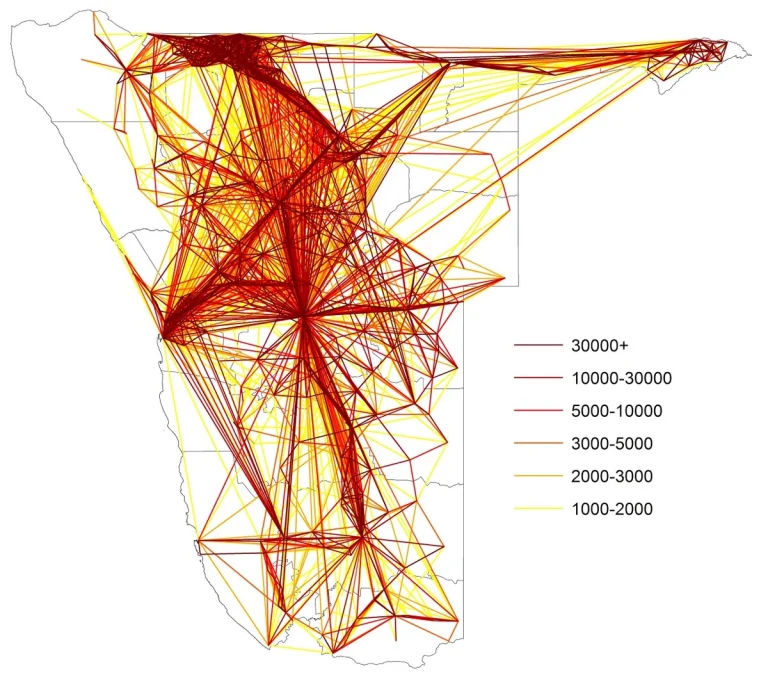Prioritizing Health Campaign Resource Allocation
Namibia has made great progress in the fight against malaria. For complete elimination, however, health officials need better data on how infected people move between communities to understand transmission dynamics. In collaboration with the National Vector Borne Disease Control Program, the Clinton Health Access Initiative (CHAI) and Mobile Telecommunications Limited (MTC), the WorldPop team is helping achieve this through a combination of malaria case data, satellite imagery and anonymised mobile phone records. Satellite imagery is used to map the environmental conditions in which malaria parasites and mosquitos are abundant, and cell phone records are used to anonymously track population movements. Together, the two types of data allow detailed mapping of malaria transmission in Namibia and allow interventions like indoor spraying with insecticide to be targeted optimally to disrupt the malaria transmission cycle.

In 2013, Namibia’s Ministry of Health, supported by the Global Fund and CHAI, used the mobility and malaria risk maps to target bed net distribution and indoor insecticide spraying to key areas. Instead of the daunting challenge of immediately covering 1.2 million people – the previous estimate of the population at highest risk of malaria – the National Vector Borne Disease Control Program used its limited resources to first reach the 80,000 people most important to the malaria transmission cycle.
Further information
- Using Satellite and Cell Phone Data to Eliminate Malaria in Namibia (Data Impacts Case Studies)
- Integrating rapid risk mapping and mobile phone call record data for strategic malaria elimination planning (Malaria Journal)
- Dynamic denominators: the impact of seasonally varying population numbers on disease incidence estimates (Population Health Metrics)


